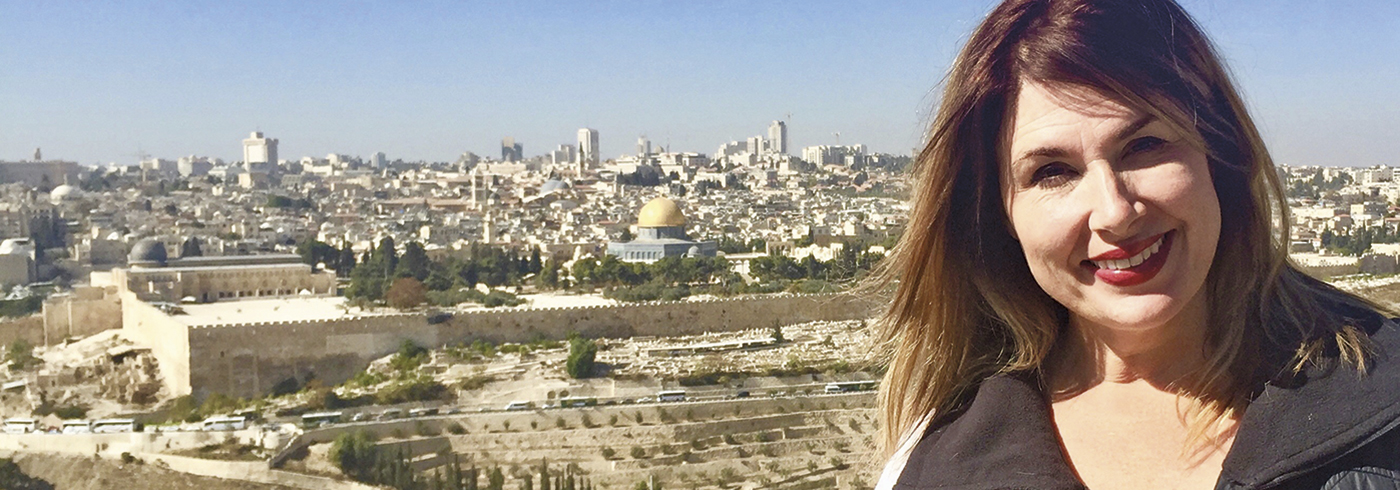Walking in the Land Where Jesus Taught
Four Questions with Amy Turnage
Amy Turnage serves as the director of the Center for Holy Lands Studies, a department at the Assemblies of God national office in Springfield, Missouri. CHLS was created to resource the local church by enhancing biblical literacy through teaching and guiding tours in the lands of the Bible. Turnage’s love for the Bible, her educational credentials, and her experience living in Israel give her a unique perspective to lead CHLS.
INFLUENCE: Tell us about yourself.
TURNAGE: I grew up in Lynden, Washington, and attended Calvin College, where I received a Bachelor of Arts in biblical studies and theology. After college, I moved to Jerusalem to pursue an M.A. at Jerusalem University College. I studied New Testament backgrounds/Jewish history of the Second Temple period. I lived in Israel for a total of six years and then moved with my family to Belgium, where I taught classes at Continental Theological Seminary.
Why do pastors need to study the Bible in the lands of the Bible?
Studying the Bible in the Holy Lands equips pastors to gain an understanding of God’s Word in the context of the biblical text itself. Experiencing the geography of the land firsthand impacts participants as the biblical story comes alive.
Walking in the land where Jesus taught allows pastors to become part of the biblical story in a manner that they could not understand any other way. For example, here are three leadership lessons when visiting the lands of the Bible:
“Experiencing the geography of the land firsthand impacts participants as the biblical story comes alive.” — Amy Turnage
1. Leading in the desert. The desert of the Negev holds the location of Moses leading the Children of Israel for 40 years. When CHLS visits the area where Moses strikes the rock for the second time and water pours out, we discuss how what should have been a miracle by God turns into a moment of praise for Moses. By striking instead of speaking, Moses received the glory — not God. Obedience in our desert times is of utmost importance.
2. Jesus leading in the wilderness. When we think of “wilderness,” we think of a desert environment, similar to the Negev. The Gospels tell us Jesus is in the wilderness, either secluding himself or preaching, teaching and leading His disciples. In Hebrew/Greek, wilderness often means “uninhabited pasture lands.” The area is the Galilee, which changes our understanding of the context in which Jesus taught. It also serves as a reminder the wilderness is not always what we expect it to be.
3. Leading in the face of adversity. Jerusalem is often our last toured city. The excavated priestly homes near the temple explain the adversity Jesus encountered. The homes are examples of very lavish lifestyles. Deuteronomy 18 forbids priests from acquiring power and wealth. By speaking against this, Jesus threatened the chief priests’ power, money and authority, which eventually led to His death. His message of loving God and one’s neighbor as oneself, even in the face of adversity, and again on the cross, is magnified to its fullest in Jerusalem.
What do you hope people walk away with when returning from a trip to the Holy Lands?
I hope people will gain a deeper understanding and appreciation for the entirety of God’s Word so that it will enrich their devotional lives and impact how they live each day.
What is your vision for CHLS now and in the future?
The vision for CHLS is that individuals of all ages and local churches in the denomination will grow in their understanding of God’s Word. We are achieving this by promoting quality educational and spiritual opportunities through tours and by enhancing the curriculum of the Assemblies of God.
This article originally appeared in the May/June 2018 edition of Influence magazine.
Influence Magazine & The Healthy Church Network
© 2025 Assemblies of God

